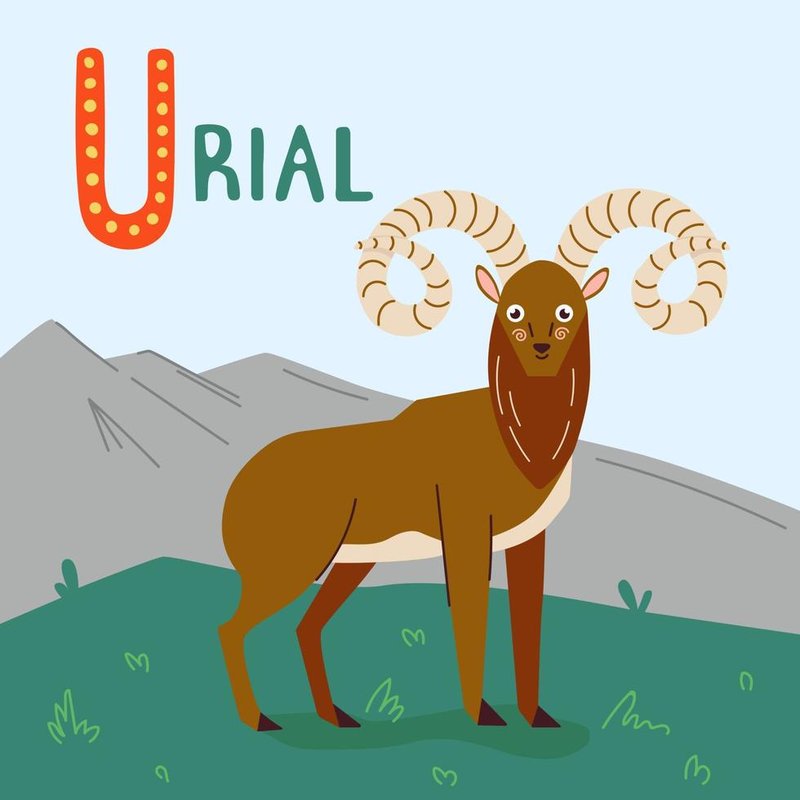
Imagine the urial as the rugged wanderer of the mountains, its impressive curved horns cutting through the mist of ancient tales. In many cultures, it’s not just an animal; it’s a symbol of the wild spirit. The way this creature interacts with its environment often reflects deeper philosophical ideas and values that different societies hold dear. From art and mythology to proverbs and tales, the urial has left its mark on human culture in fascinating ways.
So, what’s the deal with the urial in folklore? Well, let’s break it down. We’ll look at its representation in different cultures, how it has inspired art and literature, and the important role it plays in local economies and ecosystems. You’re in for an enlightening journey!
The Urial in Mythology and Folklore
In many regions where the urial roams, it is featured prominently in local myths and legends. For instance, in some Afghan and Pakistani tales, the urial is often depicted as a brave and noble animal, leading the way for lost travelers. Imagine a weary wanderer in the mountains, guided by the majestic urial, which symbolizes hope and courage.
These narratives often teach lessons about perseverance. When someone encounters the urial in these stories, it isn’t just a moment of admiration; it’s a moment of reflection on the challenges they might face in their own lives. Just like the urial climbs steep slopes, we, too, are encouraged to rise above our obstacles.
Moreover, in the Himalayas, the urial is sometimes seen as a guardian spirit. In these cultures, it is believed that respecting the urial brings good fortune and harmony. Rituals and offerings are made in its honor, reinforcing the connection between this wild sheep and the spiritual beliefs of the people.
Urial in Art and Literature
Art has a unique way of bringing creatures like the urial to life. In paintings, the urial is often depicted in its natural habitat, showcasing its striking features—like those impressive horns and rugged coat. Artists use the urial not just for its beauty, but also to convey themes of survival and freedom.
For example, in traditional Persian art, the urial appears amidst intricate landscapes that reflect the harsh yet beautiful environment it inhabits. These artworks often tell stories of coexistence between humans and nature, reminding us of our place in the world.
In literature, the urial’s presence symbolizes strength and resilience. Many poets have drawn inspiration from the urial when exploring themes of courage and independence. You might find a line or two describing the urial’s leap over rocky cliffs as a metaphor for overcoming personal trials.
Symbolism of the Urial in Various Cultures
The urial’s symbolism varies from one culture to another, and it often resonates deeply with local customs and values. In some Central Asian cultures, the urial represents masculinity and bravery. This is often tied to hunting traditions, where the urial is seen as a noble prey, embodying the spirit of the wilderness.
Conversely, in certain mountainous cultures, it’s associated with femininity and nurturing. The urial is viewed as a mother figure that protects its young and teaches them how to navigate the rugged terrain. This duality in symbolism highlights the diverse perspectives people have regarding this creature.
In contemporary culture, you might see the urial appearing in conservation campaigns. It represents the beauty of biodiversity and the need to protect our natural environments. This shift in symbolism reflects growing awareness of environmental issues and the interconnectedness of all living beings.
Urial in Modern Conservation Efforts
Unfortunately, the urial faces threats from habitat loss and hunting. As its population declines, many organizations have stepped in to protect this magnificent animal and its habitat. Conservationists often use the urial as a flagship species, symbolizing the health of the entire ecosystem.
In areas like Pakistan, conservation programs have been established to promote sustainable practices. These programs aim to educate communities about the importance of preserving the urial and its environment. Honestly, when locals see the urial as a part of their heritage, they’re more likely to engage in protective measures.
Moreover, the connection between the urial and local economies is vital. Many communities rely on eco-tourism, where visitors come to see these wild sheep in their natural habitat. By protecting the urial, communities can thrive economically while also conserving their cultural identity.
Folklore and Urial in Community Festivals
In some regions, the urial plays a prominent role in community festivals. These celebrations bring together locals to honor the urial and its significance in their lives. Games, dances, and storytelling sessions often revolve around this creature, creating an atmosphere of festivity and unity.
For instance, during a festival in Northern Pakistan, residents might organize a race up the mountains, symbolizing the urial’s agility and strength. Community members share tales of the urial’s bravery, fostering a sense of pride and connection to their cultural heritage.
Such festivals not only preserve stories but also instill values of respect and admiration for the natural world. They remind us that the urial is not just an animal; it’s part of a larger narrative that ties people to their environment.
The urial is more than a remarkable animal; it’s a vital thread in the fabric of cultural narratives across various societies. Through mythology, art, and community traditions, it has emerged as a powerful symbol of strength, resilience, and the wild spirit of nature.
As we learn about the urial and its representations, we also discover important truths about our relationship with the environment. Protecting the urial means preserving a part of our cultural heritage and ensuring future generations can appreciate its beauty and significance.
Next time you think of the urial, remember it’s not just a creature of the wild. It’s a reminder of the stories that connect us all, encouraging us to embrace nature with respect and admiration.

